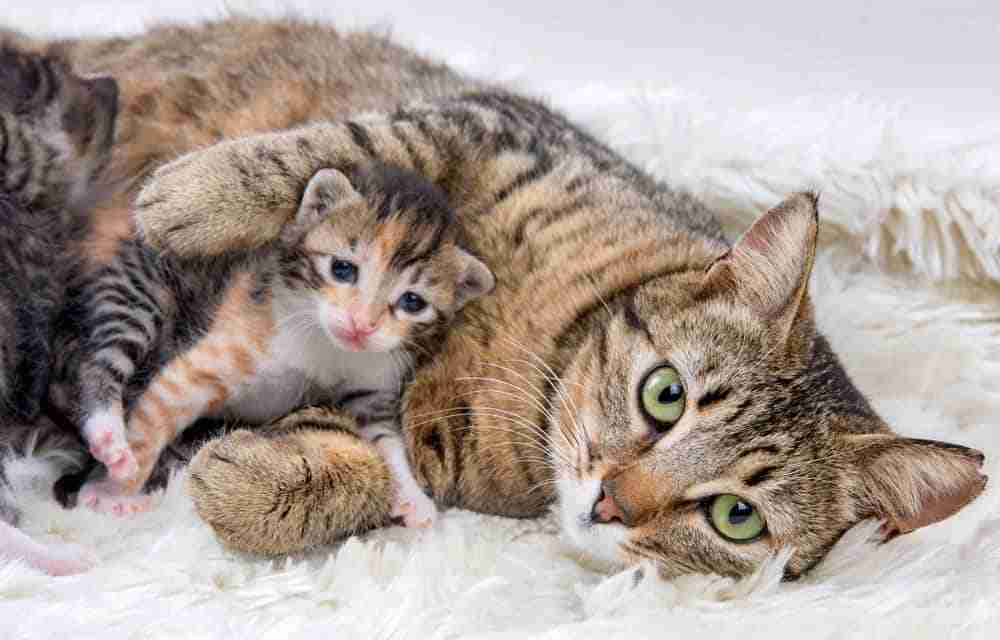Are you looking to bring a cat into your home and need to decide whether male vs female cats would be best for you? Learn the difference between male and female cats here so you can make the right choice.
As easy as it seems, there are a lot of considerations to be made before adopting a cat. The breed, breeder, personality, age, and health — all these matters have equal importance before you choose your pet.
But one of the things that people usually do not consider is gender. Is there really that big of a difference between a male cat and a female cat of a similar breed? We have brought you this article today so that you can have a better idea about male vs female cats.
Let’s see the differences:

How to Tell If Your Cat Is a Male or Female?
Determining the gender of your cat is not a complicated process. It is simple and can very easily be carried out at home. Just observing the genital area in the following process will be good enough.
First, take the kitten’s tail in your hand. The anus is a small hole located immediately below the tail. The genital entrance is located below the anus and is spherical in males and vertical in females.
If you look at two kittens of comparable size, the male has a larger space between the genital entrance and the anus than the female. The testicles of the male kitten also become increasingly visible as the kitten gets older.
Another method of determining the gender can be the color of the kitten. The relation between the color and sex of the kitten might not be a full-proof one, but it can definitely give you some idea.
Usually kittens with a mix of black, white, and orange color (tricolor or tortoiseshell) will be female. Statistically fully orange kittens also have more of a chance to be males.

How Do Male and Female Cats Differ from Each Other?
There are quite a few ways that male and female cats can differ from each other, and for you to make the right choice, it is important to be aware of both. These differences can be categorized into two distinct categories. Behavioral or personality and physical.
Male vs Female Cats Personality
To understand the behavioral patterns of cats, various different studies have been conducted over the years. With their results and combining them with experiences from cat owners around the world, we can definitely come to some conclusions.
One of these differences happens to be friendliness to owners. Studies have shown that male cats are typically more friendly towards their owners while female counterparts are more aggressive.
To elaborate, it is very common for male cats to be used to their new owners and become very friendly, social, and playful in a short amount of time. On the other hand, female cats take a long time to get used to, and even when they are, they remain cautious, territorial, and sometimes hostile.
This might make it seem like why would anyone pick a female cat over a male one, but you need to know that a more friendly and playful cat will be more prone to running around the house at odd hours.

They will also be more likely to create havoc and be destructive. In this sense, a female cat will be much calmer. They will mind their own business a lot of the time and not be overly curious.
Behavioral patterns also come into play when a cat interacts with another cat. Similar studies have shown that a female cat will not form a strong friendship with another cat from the get-go.
Before that friendship happens, they will be very protective of their favorite spots around the house, and this extends to their favorite humans too. Female cats are known to get very jealous when their human owner gives other cats attention.
This case will be somewhat different for male littermates though, a female cat will not typically be hostile towards her male littermate and will be seen cuddling and grooming each other pretty often.
Male cats, on the other hand, get along with new or other cats just fine. They do not take long to initiate friendship regardless of the new cat’s gender. However, that comes with a catch.

If you are rescuing, it is typically not a good idea to keep two tomcats together due to the possibility of a fight breaking out. You need to understand that these rescue cats grew up in unfavorable situations on the street and will be incredibly territorial and aggressive if they feel threatened.
Urine marking is another attribute of cats, and it surfaces differently in male and female cats. Urine marking basically means for the cat to pee outside its litterbox to mark the place as its territory. Not all cats show this behavior, but it is more prevalent in male cats than in females.
Male vs Female cats Physical Differences
The most obvious physical difference happens to be the reproductive organs. This, along with neutering, will be discussed later in the article. Be sure to read that part, as that is probably the most important part of this article.
Another obvious difference is the physical size. Male cats are typically larger and more physically imposing than female ones. If your cat is small they may be female. Male cats will also have a more healthy and circular face. This feature serves as the sign of a male cat being physically fit for potential mates in the wild.
Female cats typically mature faster than males. Their eyes open up earlier, and they also reach sexual maturity at an earlier age. Some research, although not concrete, suggests that female cats live longer than male cats.
The final physical difference has to do with overall health. A disease known as urinary obstructions is vastly more common in males. If your cat is particularly prone to this, a special diet to keep its urethra healthy is a must. Trips to the vet are also more regular, and sometimes surgery is required too.

Neutering in Male and Female Cats
The simple definition of neutering is cutting off the reproductive organs. This means different things for different genders of cats. For males, their testicles are removed in the process of neutering, and for females, it is their uterus that gets cut out. Also, the process of neutering is called spaying for female cats.
Though this might seem inhumane to the uninitiated, neutering is a perfectly safe and common practice and has a lot of other benefits. Experts recommend getting your cat neutered at the age of around 5-7 months for both males and females.
Without spaying, a female cat will try to find a male mate desperately in times of heat. They will be loud and vocal, trying to attract males from around the area, and will be in discomfort if they do not get the chance to mate.
A female cat’s life basically revolves around childbearing. They can remain fertile during most parts of the year, and given a chance, they will have children every year up until they are the age of 9-10.

So it makes sense that you will potentially transfer all its motherly instincts into feelings for the human by spaying. So there is a chance that a female cat will become more affectionate towards humans after spaying.
For male cats, neutering will achieve different but useful results. During heat, a male cat will roam around to try and find mates, and they will try their best to get out of the house.
They will also be far more aggressive without neutering, and the likeliness of urine marking will be more. It is not uncommon for a male cat that is not neutered to get out of the house in search of potential mates and never come back.
So regardless of your cat being a male or female, if you do not want to breed, it is generally a good idea to get your cat neutered by a certified vet during the appropriate age window.
Which Is a Better Choice for Me?
Long-term cat owners eventually grow a preference by themselves. But for that to happen, you need experience with a lot of different cats. For a beginner, we suggest meeting the cat first before adopting so that you can understand its personality better and if it is a good match for the kind of pet you want.
If you do want a clear suggestion, though, we will suggest getting a male if it is your first cat. What you do need to know, aside from all the physical differences, all depends on the particular cat.
There is no solid rule that a cat will act in a certain way just because it’s a male or female. So just use this article as a loose guideline but do not sway away from picking a cat you really like just because it is not your preferred gender.
Conclusion
Like every other species out there, there will always be some genetic differences between cats of two different genders. But it really might mean less than you think. In fact, it is perfectly common to find a male cat that is cold and distant as it is common to find a female cat that is affectionate and playful from day one.
At the end of the day, it really just depends on the individual cat. So as long as you give the kitten a healthy environment to grow up in, he or she will grow up to be a fantastic feline friend.
